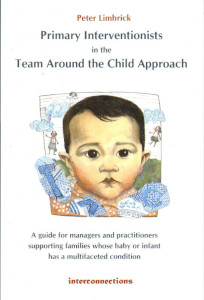Adam and the primary interventionist way of working
 'Parents who had survived months feeling unsupported now felt confused, overwhelmed and overloaded'
'Parents who had survived months feeling unsupported now felt confused, overwhelmed and overloaded'
Adam’s first weeks were in a neonatal intensive care unit (NICU). He had loving parents and an older sister.His multifaceted condition included cerebral palsy, sensory impairment, inability to suck and swallow, respiratory problems, epilepsy and sleeping difficulties.
Adam was fed by tube and had an oxygen supply available at home. During the first difficult year at home the most regular support came from the hospital’s speech therapist and paediatric nurse. There were frequent readmissions to hospital.
Realising more support was needed, towards the end of Adam’s first year, the parents contacted a voluntary agency and were allocated a keyworker who could visit the family regularly with a focus on both child and parents’ needs.
Soon after this, a handful of practitioners appeared on the scene to begin work with the child. Parents thought this was probably the result of an assessment some months earlier. Included were a physiotherapist, a therapy assistant, a social worker and two teachers – one from a sensory-impairment service and one from a home-teaching service. The child was offered a place in a special children’s centre. Two of their staff started getting to know the child at home in preparation.
Parents who had survived months feeling unsupported now felt confused, overwhelmed and overloaded. The keyworker suggested getting everyone together in an informal conference to make a coherent plan. This became a meeting of more than twenty people…

Adam's story continues in Primary Interventionists in the Team Around the Child Approach He is one of four children featured.
This new book is available now at £10.00 + £2.50 p&p.
For your copy, contact This email address is being protected from spambots. You need JavaScript enabled to view it.

